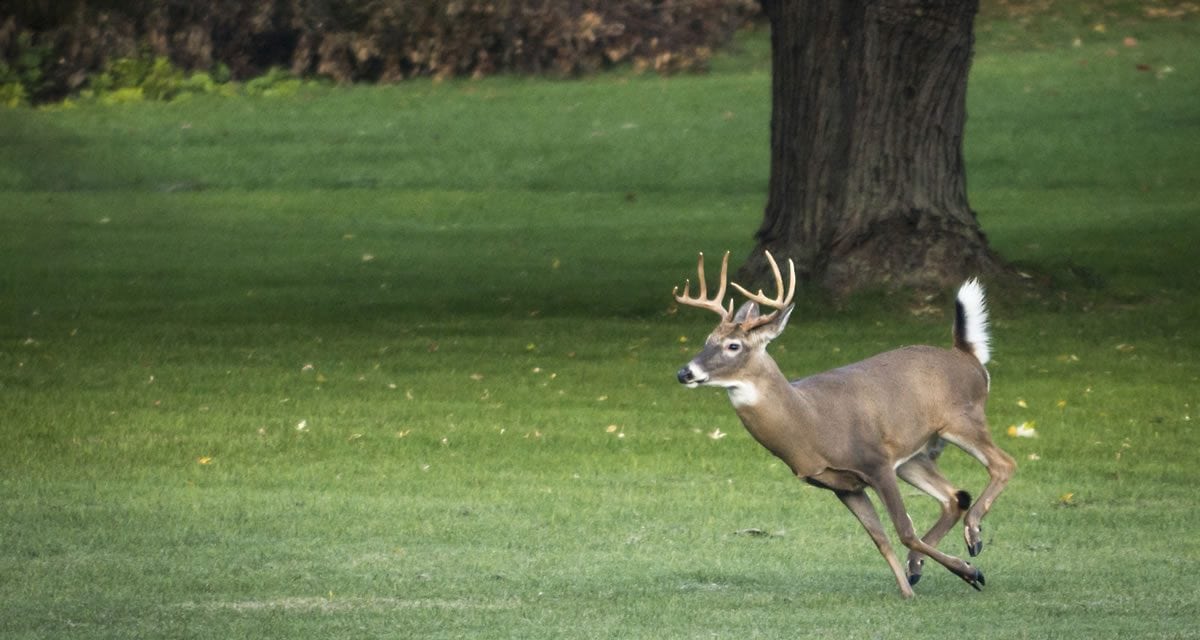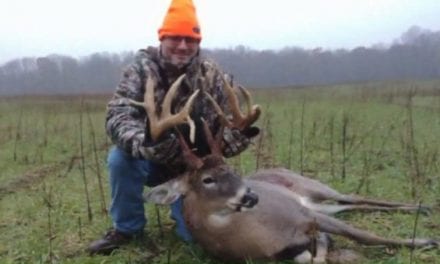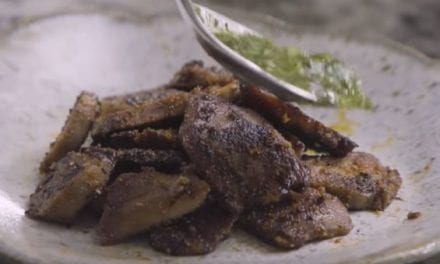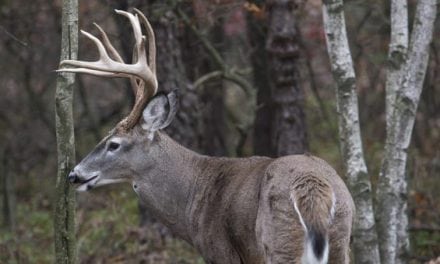By Tom Keer
No one thought much about my driving an F-250 into the fields to scout for deer. My 13-year old legs were long enough to fully depress the clutch pedal so I wouldn’t grind the gears, and my torso was tall enough so I could see well enough above the dashboard. All kids drove young in farm country, and there were even a few lanky 10-year olds who drove pickups with a hay wagon in tow.
I wasn’t quite tall enough to see above the standing silage corn, mind you, so I’d bring a step stool along. I would place my stool on top of the cab, step up, and glass for deer. Trucks were made of steel back then and I wouldn’t worry about my weight stoving in the roof. Those were the same trucks we took to the drive in, only there we would lay on the hood and use the windshield as a backrest. If I did the same today my vehicle’s roof and hood would cave in, the combination of poor-quality materials combined with my excessive weight.
Back then everything was normal for the land was inadvertently managed for game diversity. Select cut trees for lumber or firewood grew back and offered primary and secondary growth for grouse and woodcock. Wild pheasant zig-zagged through the rows of silage corn, and in the fall, migrating Canada geese pitched into either cut corn or fields planted with winter rye. Deer were in the adjoining hardwoods feasting on hard mast like acorns and beech nuts. A rack offered bragging rights but in reality they were really targets of opportunity. The real prize was a good meat deer, particularly a young, heavy doe to fill the freezer. We’d scout in the mornings and evenings, and when Opening Day finally rolled around there would be several deer hanging before the week ended.
All of the farms of my youth are now either suburban sub-developments or shopping malls. Jobs, too, moved into the city regardless of the size. That’s nothing new, for jobs migrating from farms to cities as been going on since the beginning of the industrial revolution. But what happens when the blood in a freshly-minted city slicker runs thick with sporting heritage? They just look for creative solutions to complex problems.
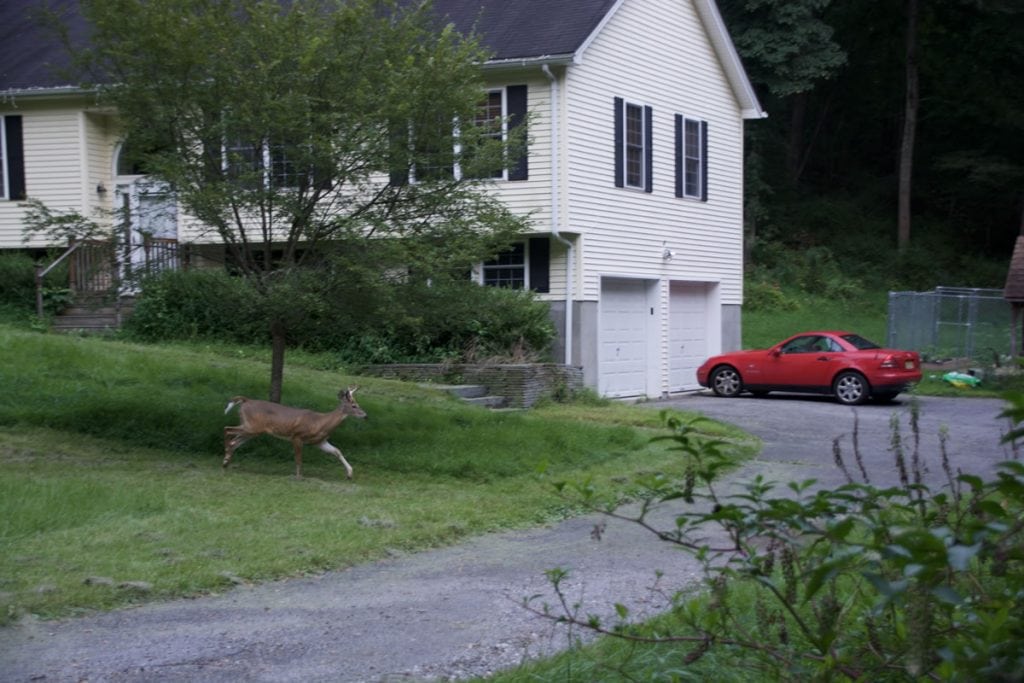
No discharge of firearms due to close proximity to homes and buildings? No problem, we’ll archery hunt. Deer winding hunters from a 17-foot tall tree stand? We’ll set ours twice as high and be extra careful. No time off from work for a long, extended hunt? No worries, we’ll go before first and last light. And if no one wants to eat what we harvest? Cities are full of soup kitchens that welcome donations.
Theodore Roosevelt once said “do what you can, with what you have, where you are.” And that is perhaps why Boston’s A.J. Derosa launched his Urban Deer Complex (www.urbandeercomplex.com). “As a kid living in suburbia I didn’t have the opportunities enjoyed by rural hunters,” he said. “Truth be told I’d prefer whitetail hunting in Midwest farm country as I enjoy the big woods in Northern New England. But the legacy I inherited, and many other sportsmen like me, was one of malls, sub-developments, and skyscrapers. And just like the whitetail I hunt, I learned to adapt.
“The largest deer I’ve harvested was behind a mall. He scored 158 7/8 inches, weighed 201 pounds dressed, and, get this, I arrowed him before work. There were a lot of big bucks that year, and I passed on several big-bodied shooter bucks in the 120-140 class before selecting him.
“Deer are complex anywhere you hunt them, but those living in the suburbs have even more exaggerated behavior. Increased stimuli changes their awareness and behavior. As urban people become hyper-sensitive, deer change, too. Whitetail view the world in terms of threatening or non-threatening behavior. Rural deer that smell aftershave recognize it as unnatural and get spooked. Scent-block clothing is critical in those areas. But those same deer in the suburbs smell aftershave every day. They get conditioned to Old Spice when a post-work jogger runs by them. And what happens when no harm comes to the buck or does? They accept the smell as normal. Set off your car alarm in the big woods and deer spook. In the suburbs deer are so comfortable they continue feeding. A car alarm is normal just as is a police siren, beeping horn and backfiring trucks. Suburban deer behave quite differently.
“And so do suburban hunters. I think of the concept of ‘urban camo’ not as a pattern but as a way of thinking. Again, what does a whitetail consider safe versus unsafe? One example occurs when I find does under my stand and I have to go to work. Instead of spooking them I talk to them. Then I move slowly down my stand, and gently walk away and head for work. My interaction with them caused them no harm, and they process my contact as non-threatening. I do the same the next time, and the time after, and they come right in to feed. When the rut is the bucks come calling. Over the years I’ve arrowed a number of quality bucks that way, too.

“Deer want to behave habitually but the suburbs don’t allow for habit formation. Whitetail move in a core area, those acres where they spend the majority of their lives. The only time they leave the core area is during the rut, and they’ll return to their core when the rut ends. Suburban whitetail don’t follow that pattern. If a rutting buck crosses a busy roadway or moves into an area between shopping malls or sub-developments they typically don’t return to their core area. The travel route is too dangerous. So late season hunters looking to capitalize on deer returning to a core area get frustrated when hunting in the suburbs because that patterned deer seldom returns. Success comes to hunters who identify the areas where the bucks moved on to, for that becomes their new core.”
Rick Laytham is a New Jersey hunter who spends his time in the suburbs. “Let me say that urban hunting has been the lion’s share of my hunting career. And I’ve always enjoyed the ‘freedom’ that comes with it. By freedom I mean time. I don’t need an entire preseason to scout. I scout by paying attention while driving to work. Freedom comes from not having to drive 400 miles to a hunting camp. Instead, I can get in a morning and evening hunt every day. There is less competition, and I’m privileged to be in an area where there are numerous 140-150 class deer.”
Over the past few decades, suburban deer hunting has become more popular and will continue to expand. Turkey are showing up in those same areas, too. Since our national trend is to cut trees and develop fields into malls and housing developments the suburban deer complex will continue until that construction trend reverses. In an odd way, suburban hunters actually improve safety conditions on our roads. Several years ago, a 16-point, 265 pound buck ran from a patch of land in between a Home Depot and a Wal-Mart. It charged across a major highway where it was hit by a van carrying a family. Had a hunter arrowed that buck he’d have set a state record. But who would think an archery deer hunter could be more helpful than a traffic police officer? Never in a million years, me thinks. Never in a million years….

